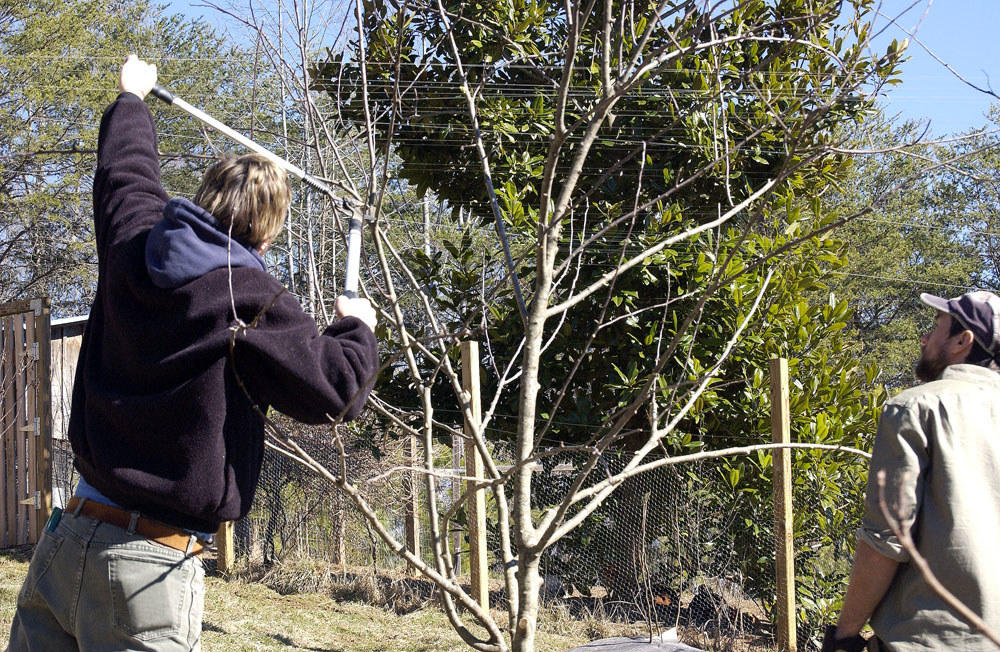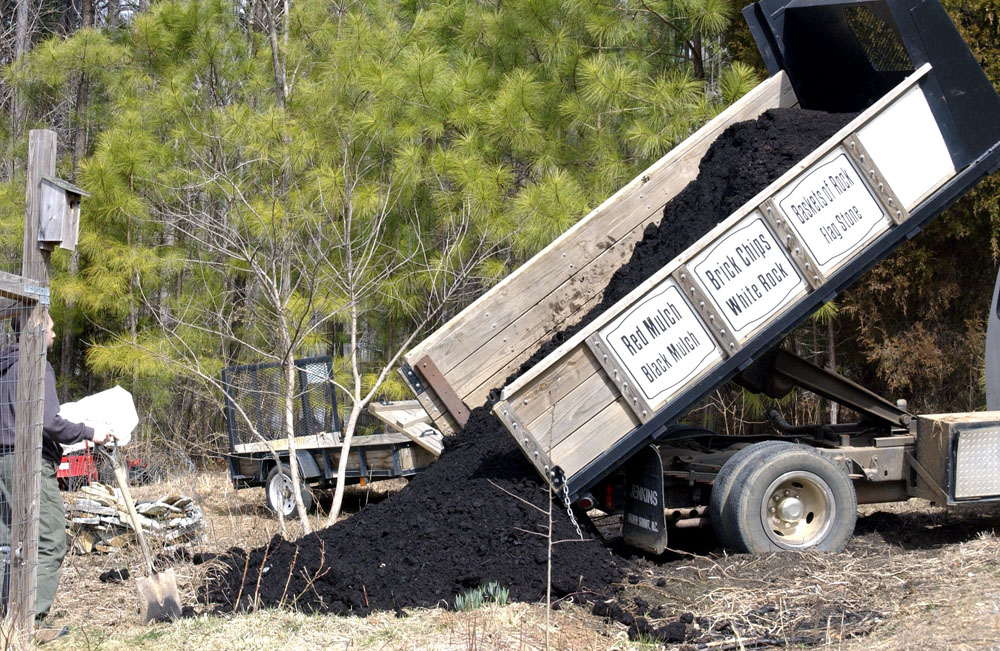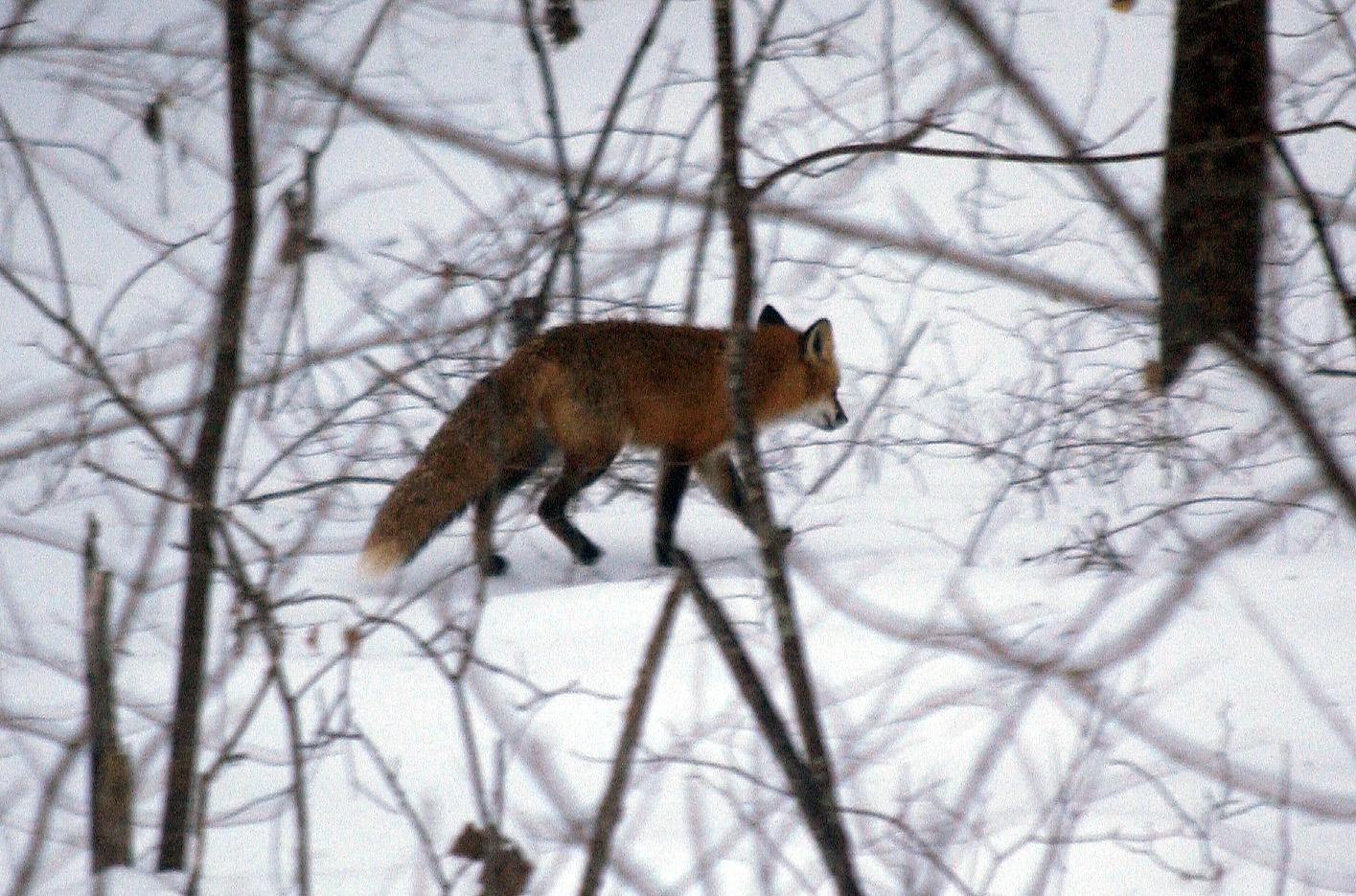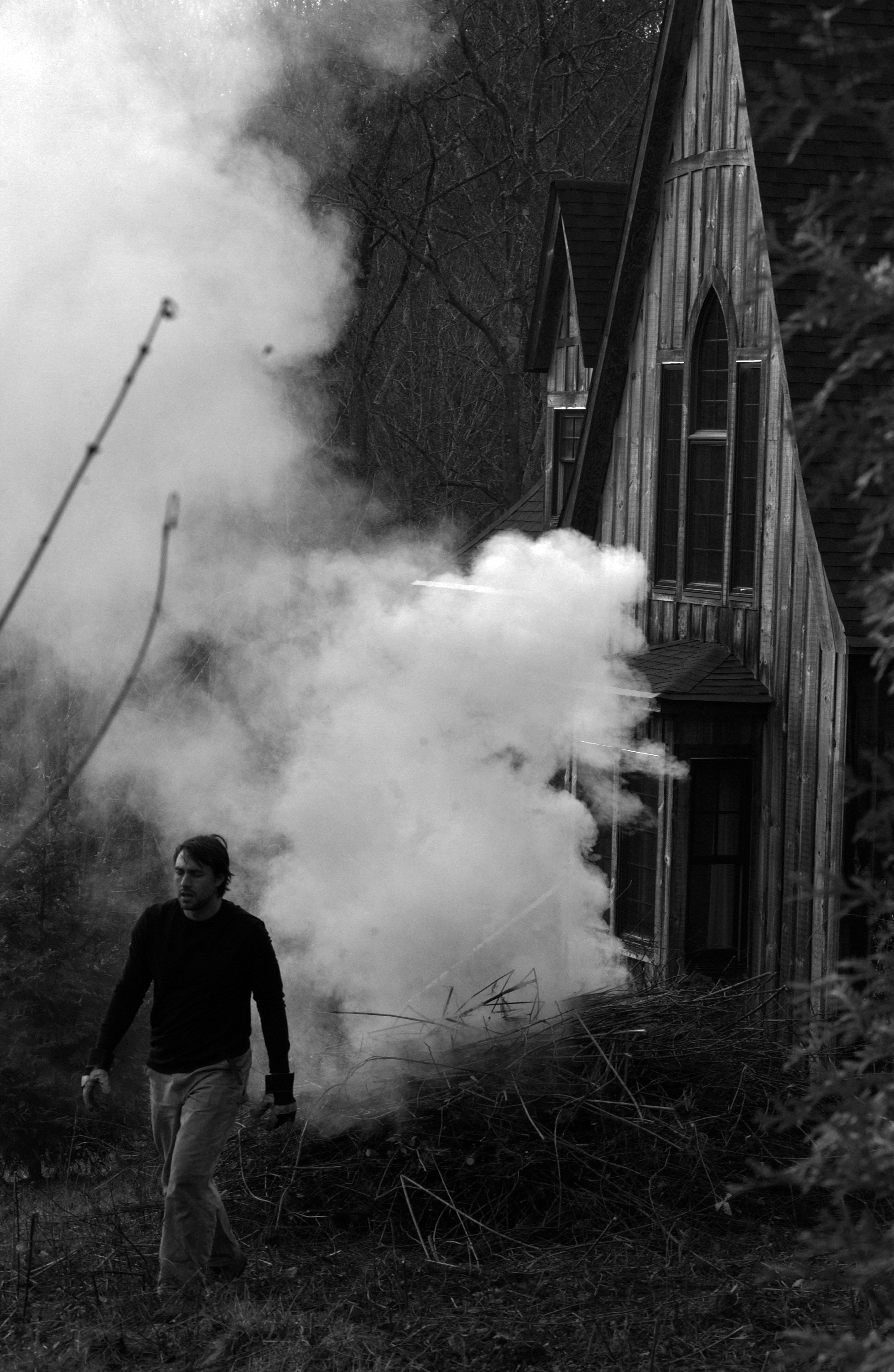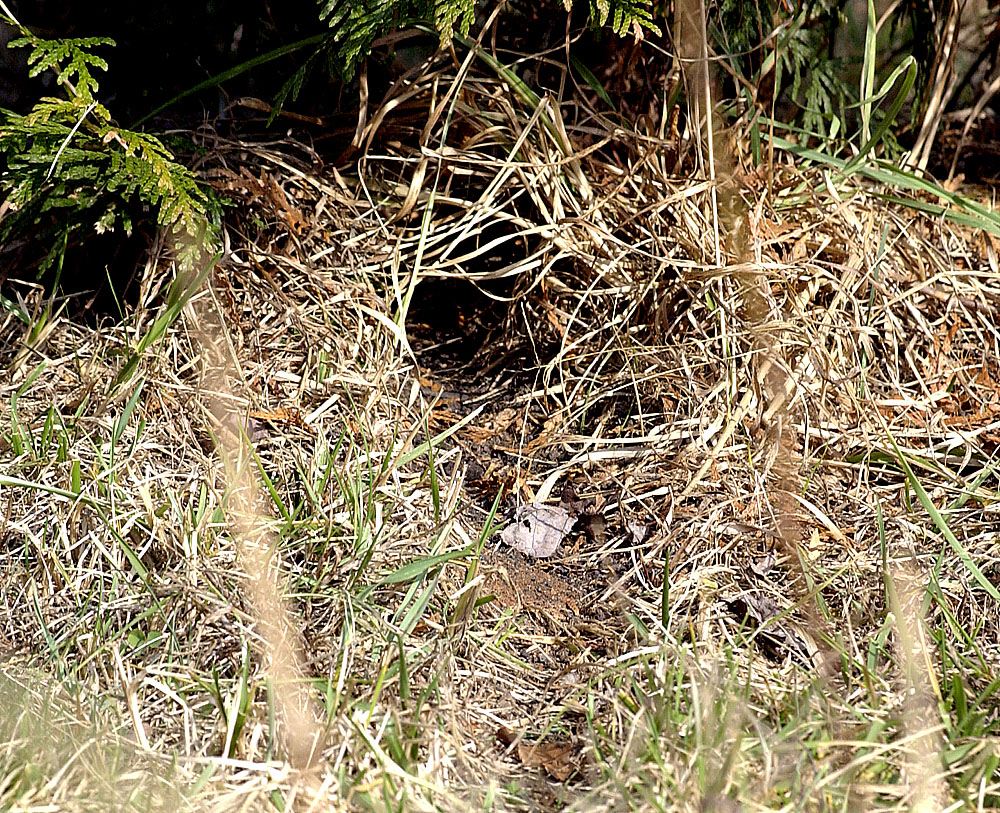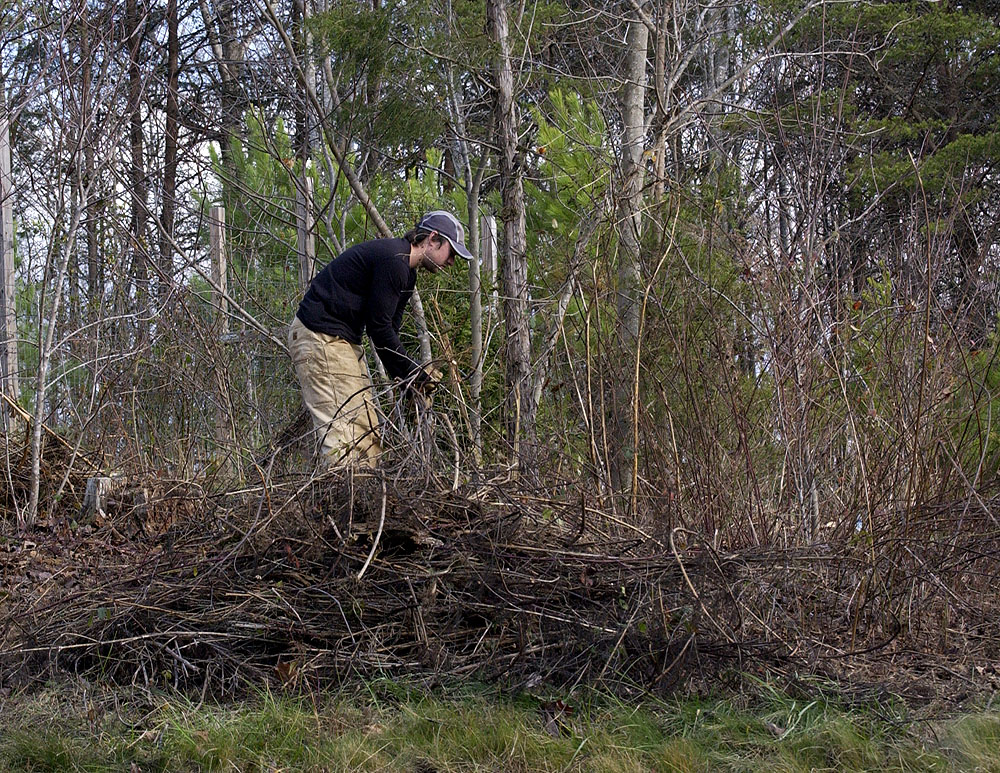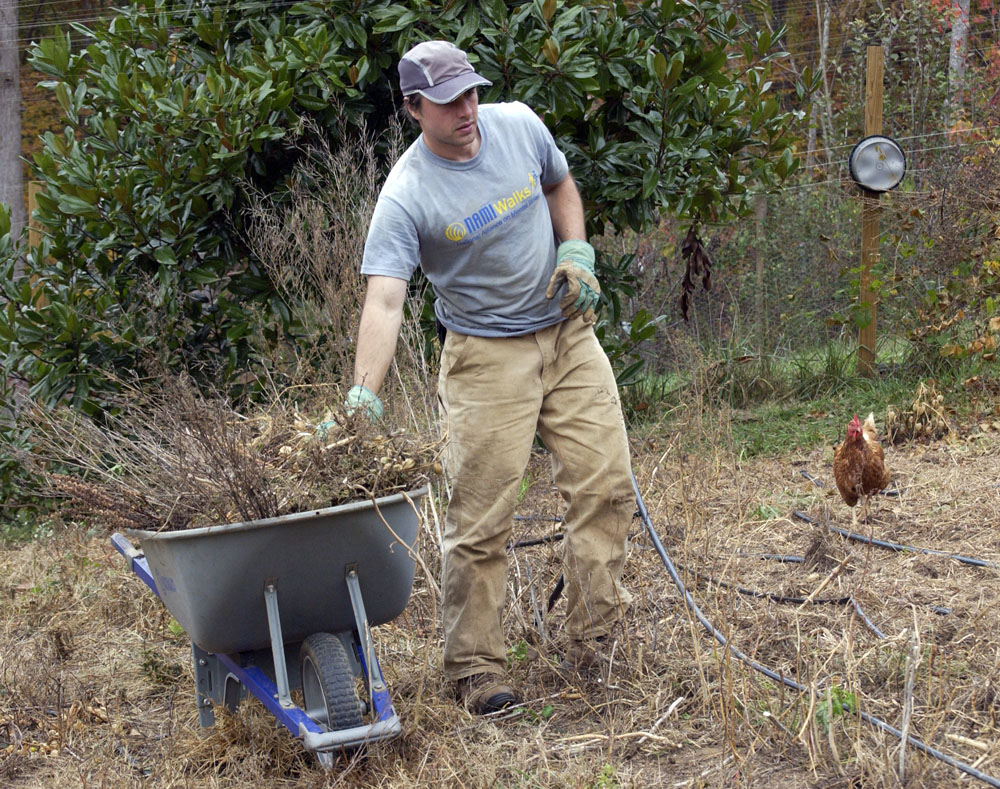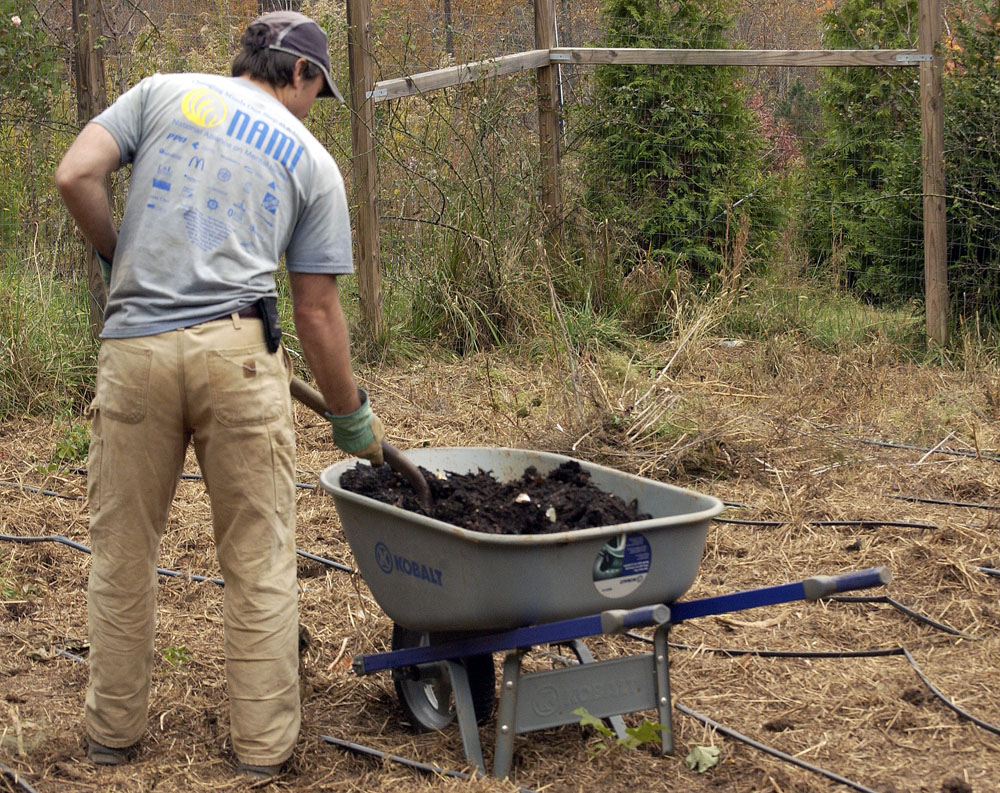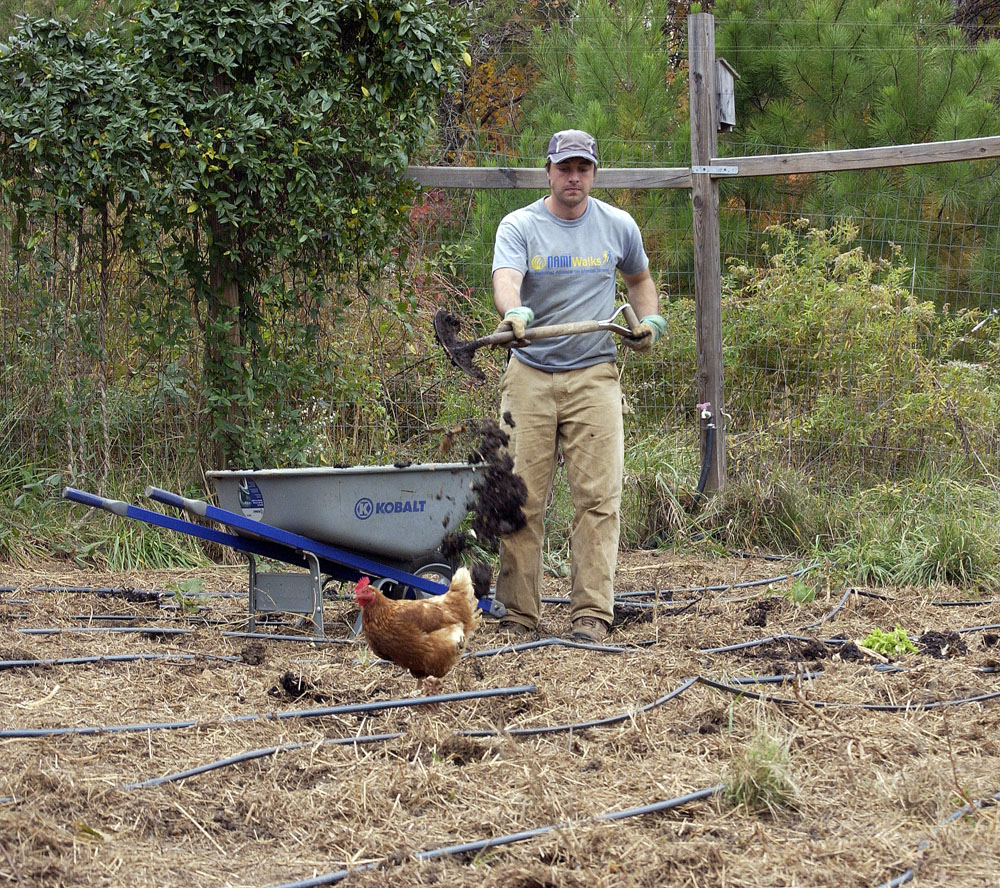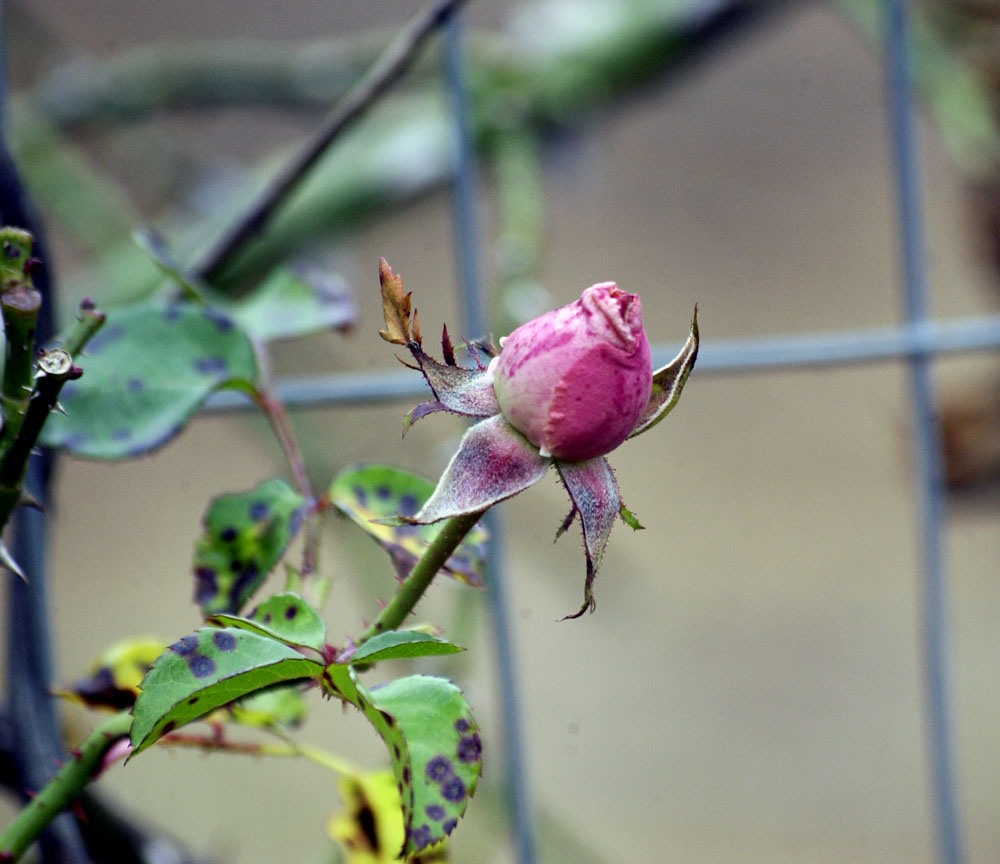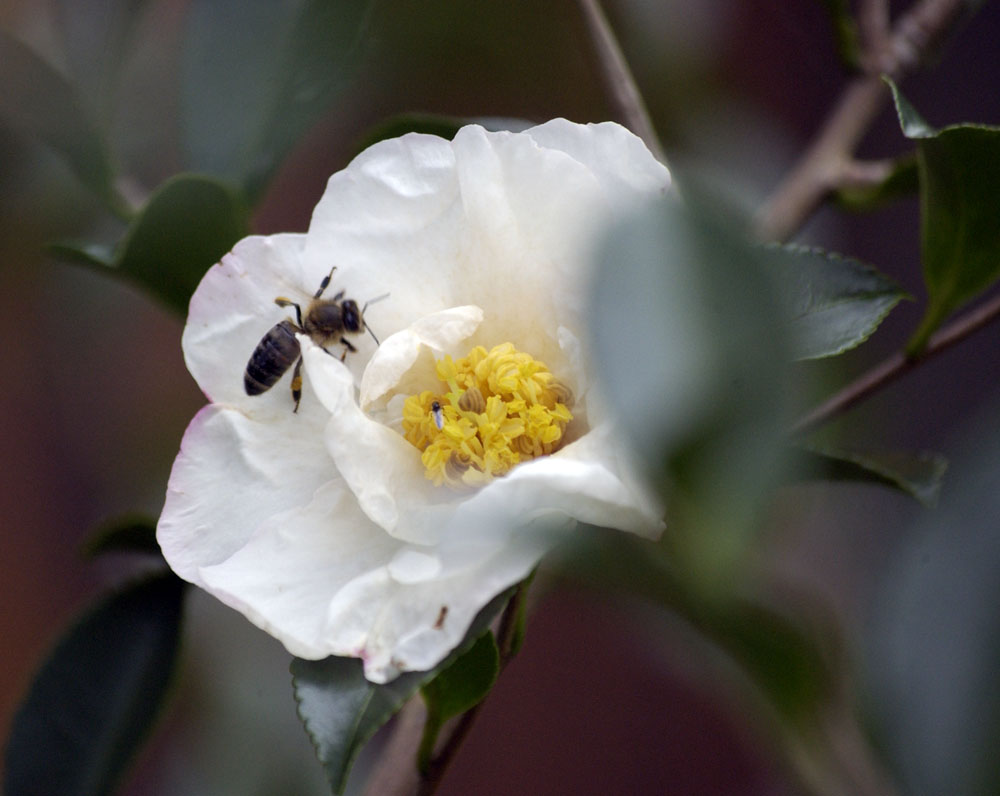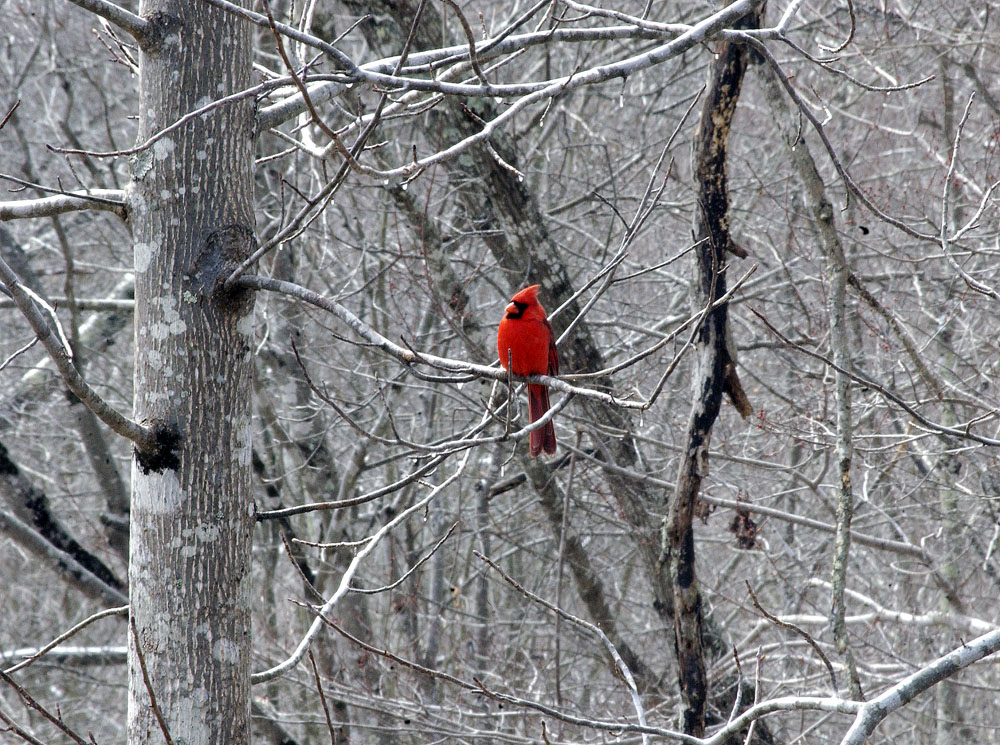
Everywhere you look these days, there’s a cardinal. This photo was taken from an upstairs, west-facing window at the abbey.
Category: The land
The pruning’s done
Another drop in the compost bucket
It’s shocking how the abbey grounds soak up compost. I long ago lost count of the total number of truckloads of compost that have been delivered here. It’s used for mulch and to loosen the soil when trees and shrubs are planted, plus a large amount of compost is tilled into the garden each year. The soil eats it, and it seems to vanish. But surely it’s still around in some form, feeding the earthworms. This is leaf compost, which is not the most nourishing compost in the world. But the earthworms eat it and never complain.
Spring fever
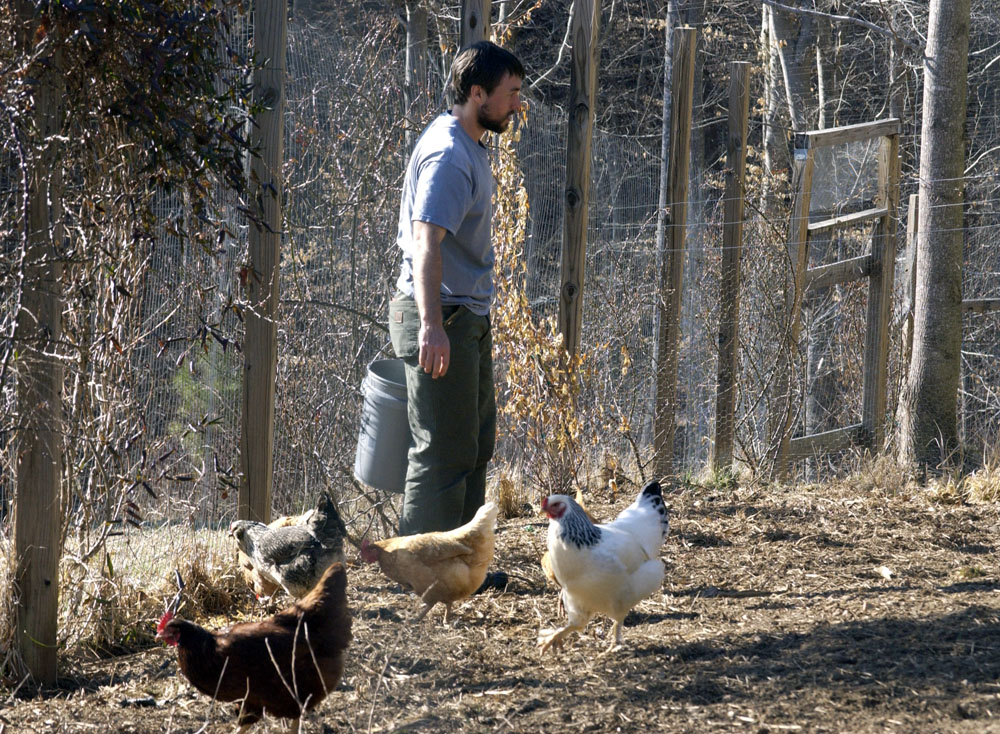
Picking up rocks in the garden
Winter’s back is broken. The temperature today reached 68 degrees. The daffodil shoots are a couple of inches high. While I have been recovering from minor surgery, Ken has a serious case of spring fever. This morning he washed all the windows, inside and out. Then we measured for an extension of the chicken fence into the woods, to give the chickens more scratching space and more summer shade. Ken wrote up a list of spring chores, including seeding and fertilizing the yard and orchard, mulching, and getting the spring garden planted. We’re a little late with pruning the apple trees. That needs to be done this week. The seeds for the spring garden have been ordered.
It was a harsh winter. Several times the temperature dropped as low as 4F. Most winters, the grass retains a strong tinge of green, but this winter everything went brown. The current generation of chickens (there are six of them) are the fiercest scratchers we’ve ever seen. They were damaging the turf in the orchard, so we allowed them only in the garden for most of the winter, where they could do no permanent harm to dormant growing things other than the garden’s cover crop of winter rye. Between the cold and the constant digging of the chickens, not a single sprout of the winter rye in the garden seems to have survived.
One couldn’t possibly have too much pasture for chickens. When growing conditions for grass are good, the grass can stay ahead of the chickens. But the girls can make a big mess of things in the winter. Luckily our chickens can be restricted either to the orchard or to the garden, with the chicken house in the middle. That saved the turf in the orchard this winter. The plan now is to add several hundred square feet of fenced area inside the woods.
When you’re committed to your chickens, the labor never ends. Partly this is because chickens become part of the family. And partly it’s because, once you become accustomed to home-laid eggs from properly pastured hens, there is no going back. No matter how much you’re willing to spend on eggs at places like Whole Foods, there is just no comparison.
Welcome back, Mrs. Fox?
When I first saw this fox this morning, she was sitting in the yard right below an upstairs window. By the time I grabbed the camera, she had headed into the woods. The photo was taken from the upstairs window. Two summers ago, a fox raised two pups at the edge of the woods right behind the house. I hope she’s back. They never harmed the chickens. We had a deal.
Vole control: the fire
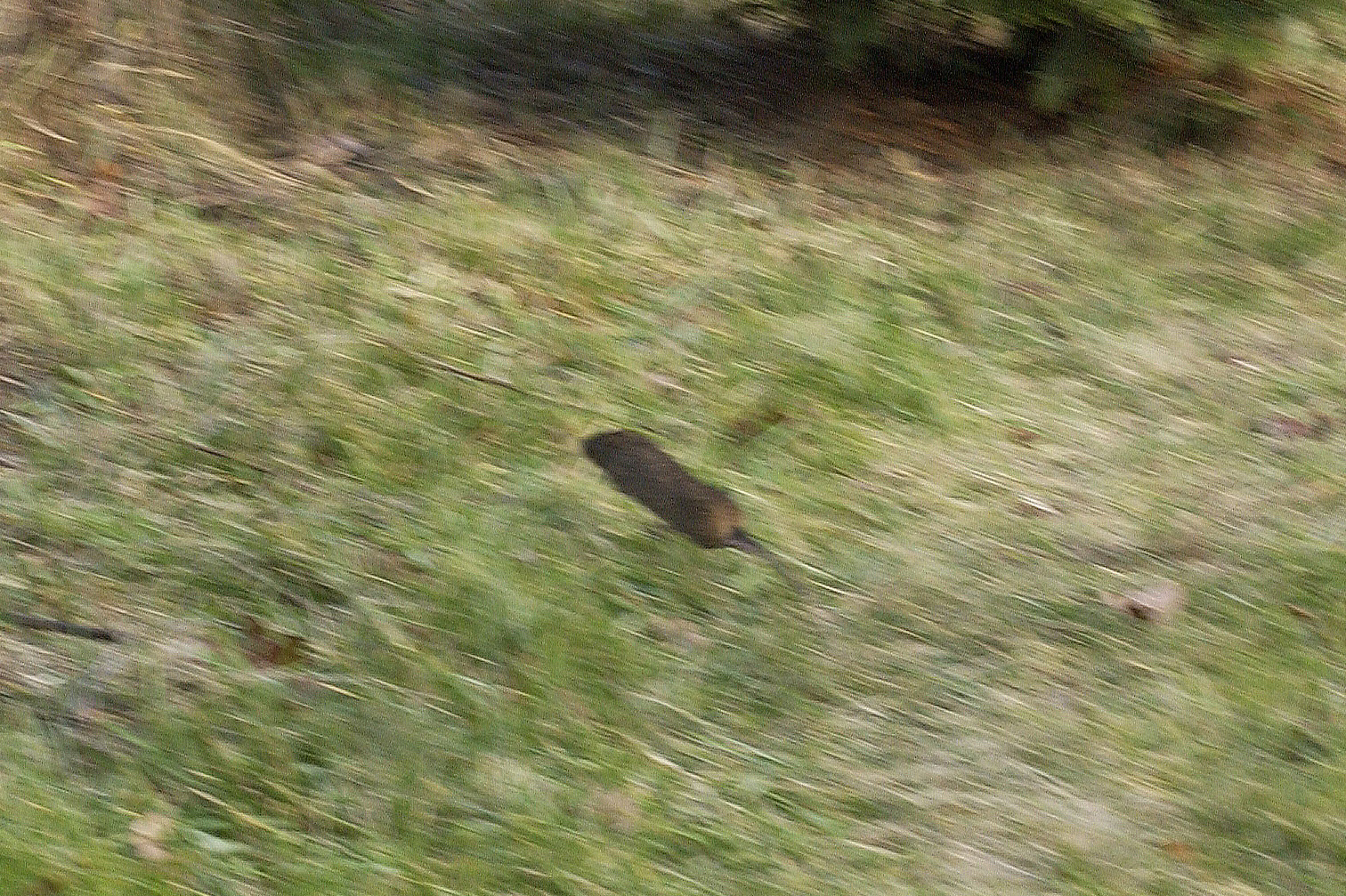
A vole flees the fire in the wildflower patch.
There were two voles hiding under the brush pile when Ken lit it on fire. As soon as they perceived what was going on, they ran to another brush pile a few feet away that was waiting to be burned.
“Poor things,” said Ken. But we burned the brush in the wildflower patches anyway. The voles fled toward the garden when the last brush pile was thrown onto the fire. I would have preferred that they’d gone to the woods.
Vole control
Ken said that, when he was pulling up dead stalks from one of the wildflower patches yesterday, a vole sat and looked at him for a while, as though to say, “What are you doing to my neighborhood?”
Of all the many little creatures that live around (and off of) the abbey, the voles are the least welcome. They do a lot of damage in the garden. Their population can jump incredibly fast if the livin’ is easy. They’re verminy, though they’re also cute in a mousy sort of way. Their other name is “meadow mouse.” But somehow calling them by the more charming name of meadow mouse would make it harder to destroy their neighborhoods.
It was an extremely wet summer, which meant a lot of brush growth. The voles love that, because it provides them with cover. Ken has been clearing the area around the garden, and the voles don’t like it at all. You can trace their runways from the chicken house to the pump house, from the garden to the wildflower patches, from the wildflower patches to the grove of trees in front of the house, and from the grove to the day lily patch. They’re furtive little things, and though we see them often they’re hard to photograph.
As far as I’m concerned, they can make themselves a new runway from the garden all the way back to the rabbit thicket and the woods, where they’d be welcome if they’d stay there. I just hope that no one ever writes a Watership Down that’s about voles rather than rabbits. That would make it much more difficult to burn out their neighborhoods and turn them into little refugees.
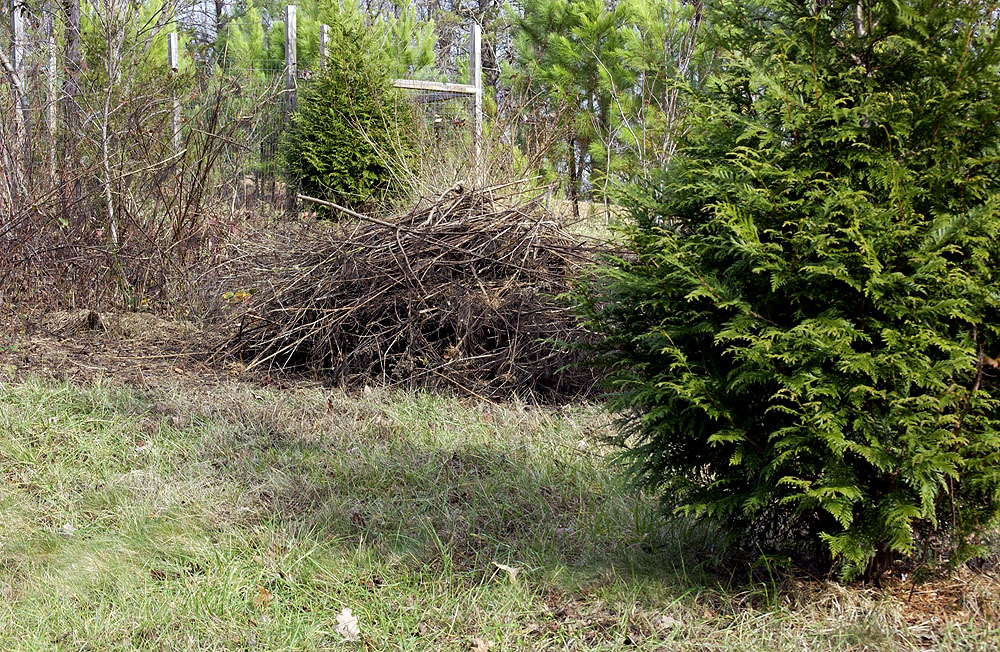
The voles are not happy about this. It will be burned.
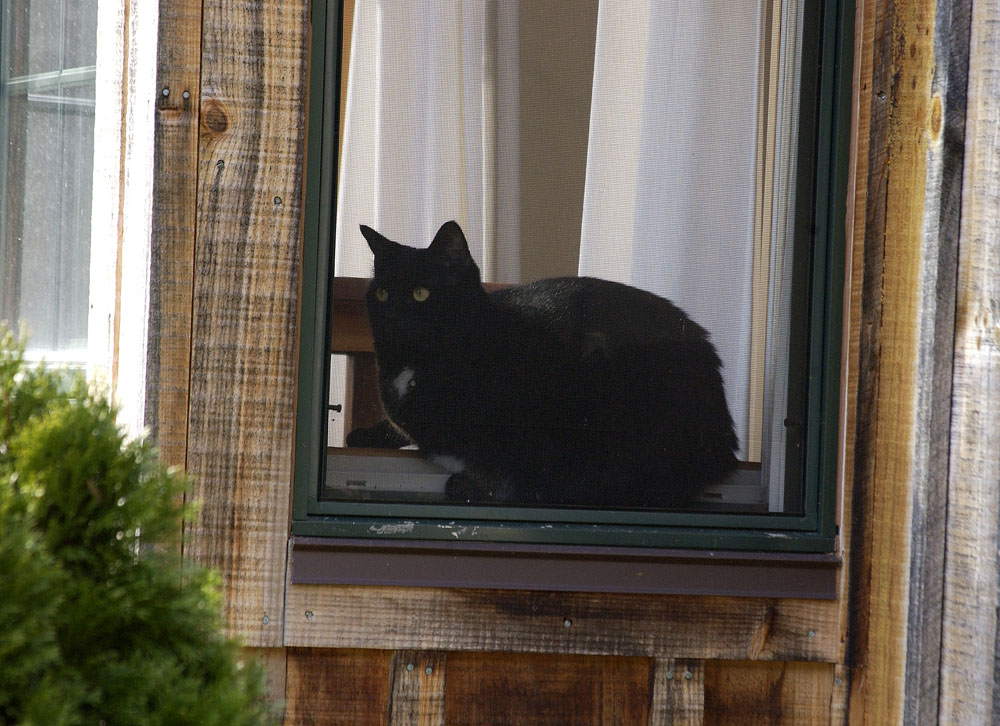
It was a warm day, so Lily watched the proceedings from an open window.
The magic of feathers
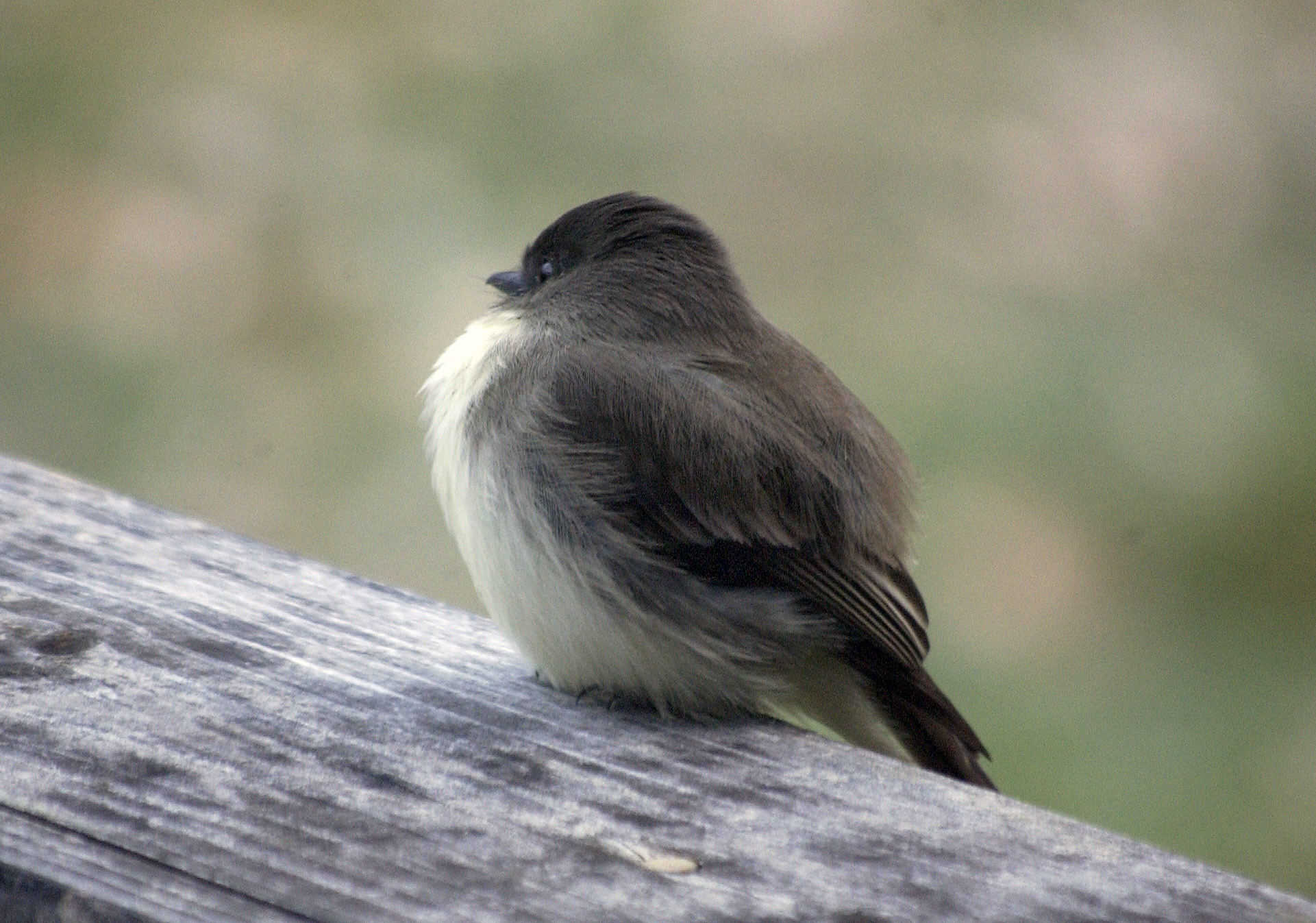
Click on image for high-resolution version
People often ask me if I worry about the chickens getting cold during the winter. Actually, no. The breeds are supposed to be New England hardy, and the girls huddle up on the roost. Summer heat seems much harder on them than the winter cold, and they go right on laying in winter.
Now the poor tiny birds, that’s something else. Chickens have a much more favorable surface-to-mass ratio and dense layers of feathers. Whereas the tiniest of birds have a relatively large surface area and can afford only so many feathers if they hope to fly. But, somehow, the birds get through the winter.
I’ve often meant to lurk outdoors on a winter evening with binoculars to observe just where the birds sleep. I do know that they love cedar trees. There are lots of wild cedar trees nearby, though there can’t be enough to go around. Plus we’ve planted 17 arbor vitae trees, large and small (mostly large) at the abbey, and that should help.
Sometimes on the coldest mornings I’ll make an extra large batch of grits and serve them to the girls while the grits are still warm.
Halloween work day
Ken has done a lot of traveling and has had a number of public appearances to prepare for, so there hasn’t been a lot of time for farm work this fall. But this week he has started catching up. First step: clean the litter out of the garden. Second step: throw on some compost. Next: Till the garden, plant winter rye, and wait for rain. Not only is a crop of winter rye good for the garden, it also provides winter greens for the chickens.
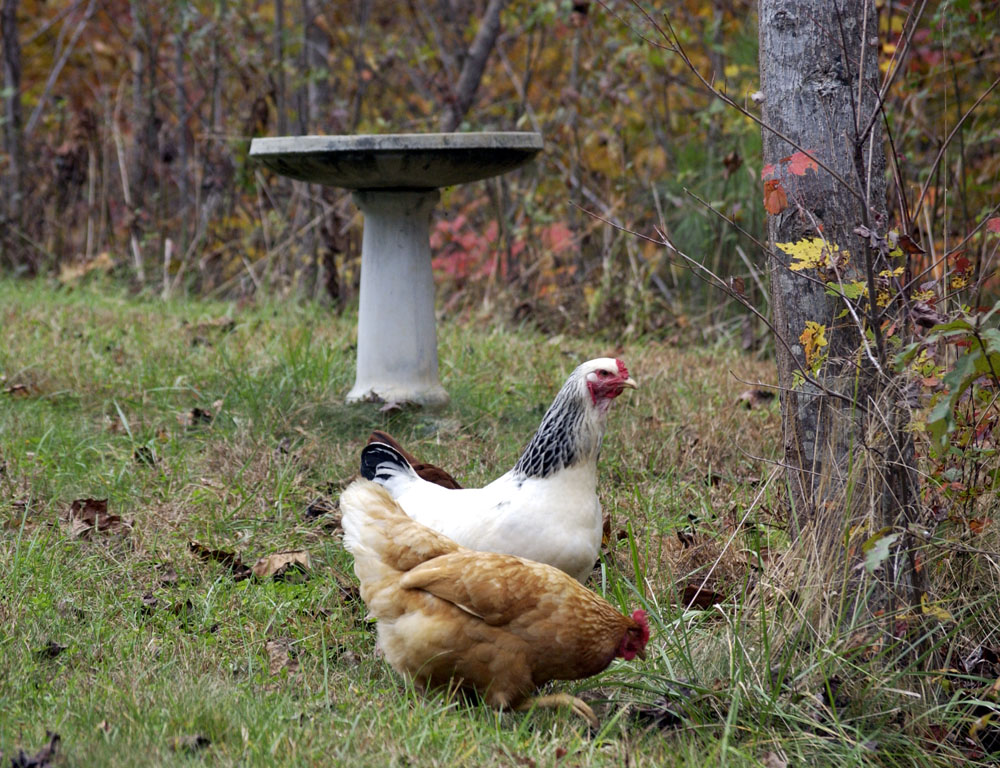
Ken lets the chickens out to roam when he’s outside working and can keep an eye on them. The abbey has six chickens at present.
Free clover, all you can eat
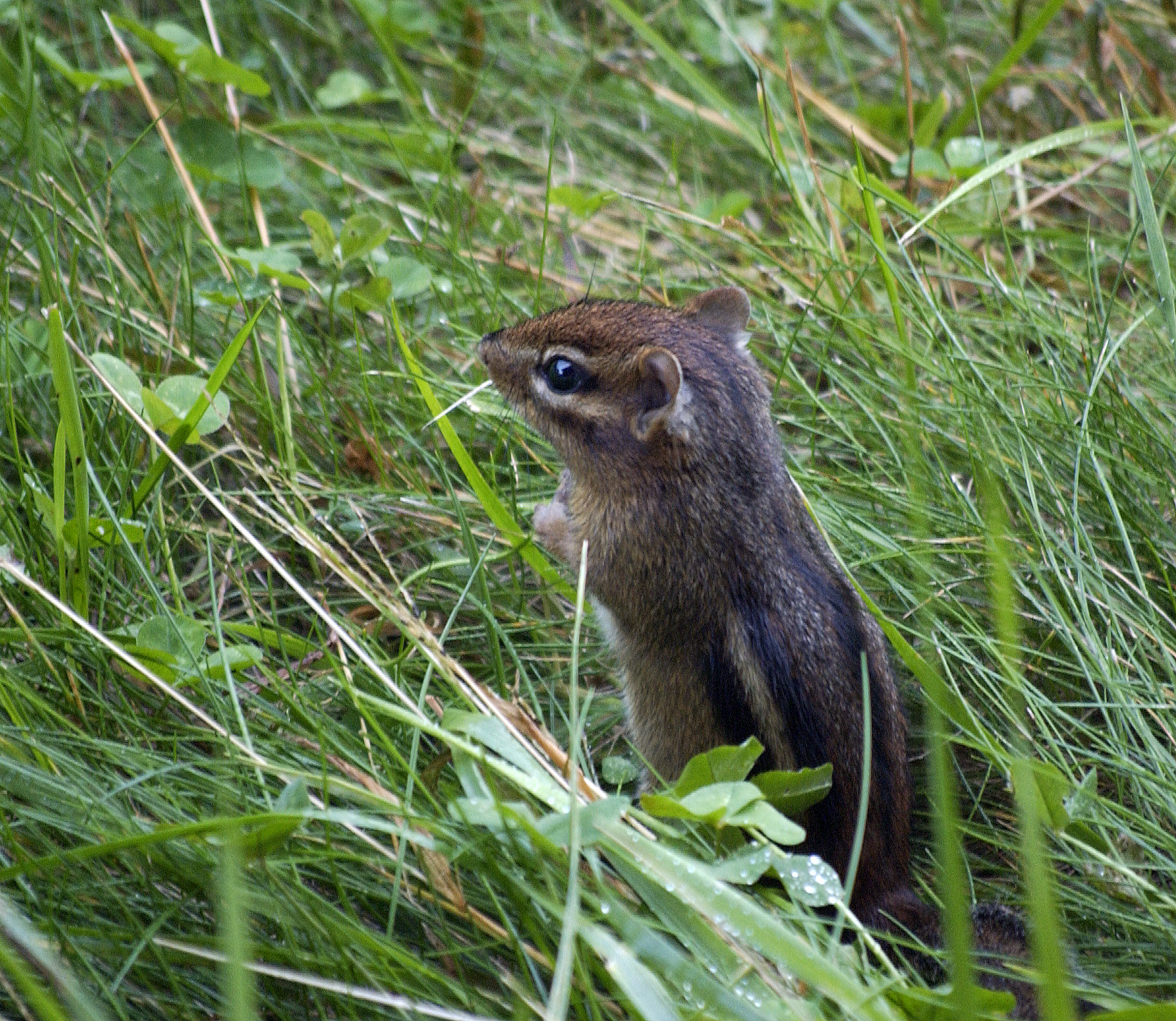
Click on image for high-resolution version
Everybody eats the abbey’s clover — rabbits, groundhogs, squirrels, chipmunks, chickens, deer. And who knows who comes in and eats it in the dark of night.
I’ve seen this chipmunk several times lately outside the abbey’s side door. I’m wondering if a family of chipmunks has taken up residence under the side porch.

